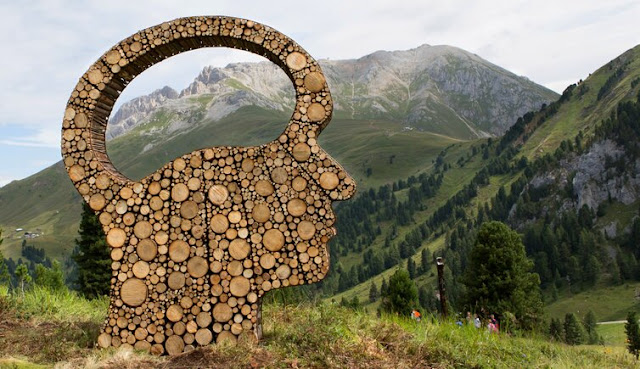Land Art, also known as Earth Art, emerged in the 1960s and 70s as a radical form of artistic expression rooted directly in the natural landscape. This movement was born from a growing disillusionment with the commercialization of art and a burgeoning ecological awareness. It sought to transcend the confines of traditional gallery spaces, engaging directly with the environment itself. Artists of this genre ventured into remote locations to create works that were inextricable from their settings, blending art and the earth into transformative experiences.
One of the most iconic figures of this movement is Robert Smithson, whose seminal work, "Spiral Jetty" (1970), remains a profound influence on land art. Constructed in the Great Salt Lake in Utah, this massive spiral of basalt rocks and earth stretches out into the water, forming a 1,500-foot-long and 15-foot-wide coil. Over the decades, "Spiral Jetty" has been subject to the lake's fluctuating water levels and salinity, embodying the transient and dynamic nature of the earth itself.
Another pivotal artist, Michael Heizer, is known for his ambitious projects that manipulate the earth’s contours. His piece "Double Negative" (1969) involved removing 240,000 tons of rock to create two massive trenches on the edge of a mesa in Nevada. This work creates a stark visual and physical contrast that disrupts the natural landscape in a way that compels viewers to contemplate the intersection of human activity and the natural world.
Nancy Holt, an artist who often worked with the themes of perception and space, offered a different perspective on land art with her "Sun Tunnels" (1976) in Utah’s Great Basin Desert. The tunnels are precisely aligned to frame the sun during the summer and winter solstices, integrating celestial dynamics into the experience of the artwork. Holt's approach emphasizes the cosmic and temporal dimensions of land art, engaging with celestial phenomena and the landscape in a dialog that extends beyond the immediate sensory perceptions.
The works of British artist Richard Long also resonate with the principles of land art. Long’s creations are marked by simplicity and an engagement with the environment through walking. One of his noted works, "A Line Made by Walking" (1967), was created by repeatedly walking back and forth in a straight line in a field, leaving a visible mark in the grass. This act of walking as art challenges traditional notions of sculpture and installation by emphasizing the process over the product.
Land Art was not limited to the vast expanses of America’s deserts and wilderness. In Europe, artists like Christo and Jeanne-Claude wrapped coastlines and islands in fabric, highlighting natural contours while simultaneously making bold statements about human interaction with the landscape. Their projects, such as the wrapping of the Reichstag in Berlin and the "Surrounded Islands" in Miami, served as temporary alterations that invited reflection on the character and transformation of landscapes.
The legacy of Land Art continues to influence contemporary environmental art, where issues of ecology and sustainability take center stage. Artists today draw inspiration from the pioneers of Land Art to explore and address global environmental issues through their work. Moreover, this genre has expanded the parameters of what art can encompass and where it can be located, forever changing the relationship between art, artist, and environment.
Land Art is more than just an artistic movement; it is a philosophical inquiry into the relationship between humans and the earth. It invites us to reconsider our impact on the world and the ways in which our environments shape artistic expression.








%20at%20Pen%20and%20Brush..png)

.jpg)
No comments:
Post a Comment